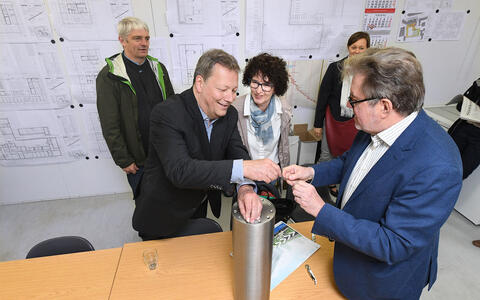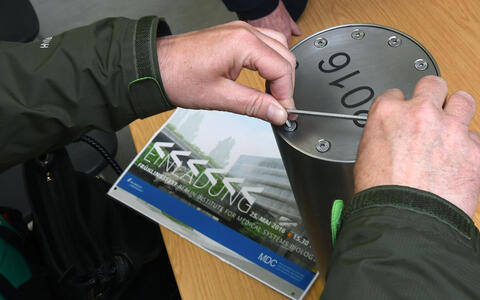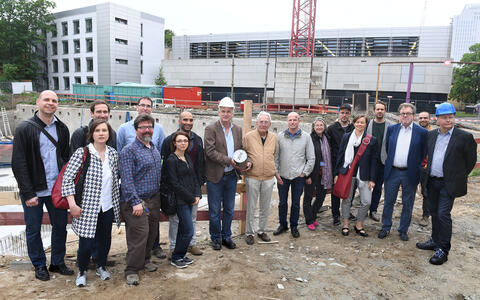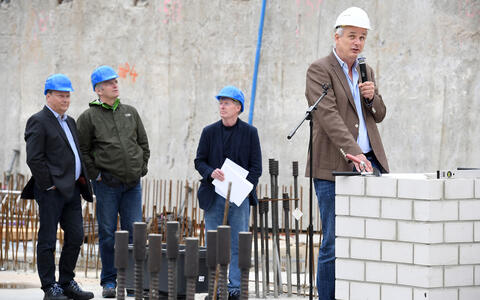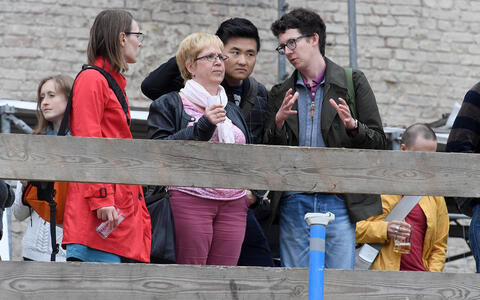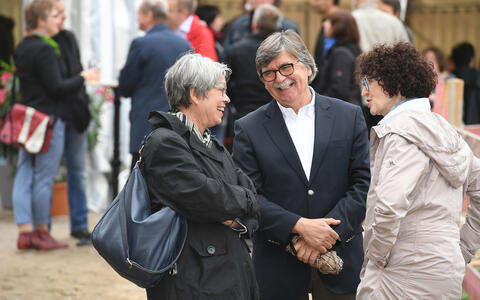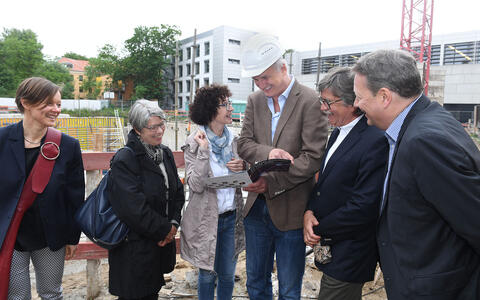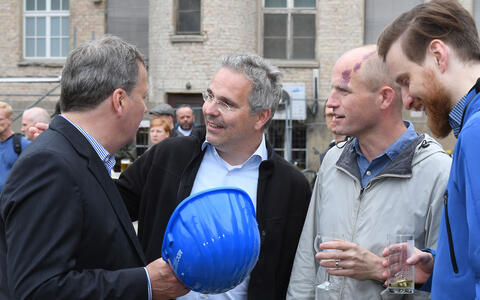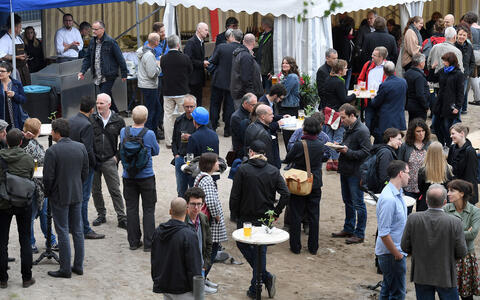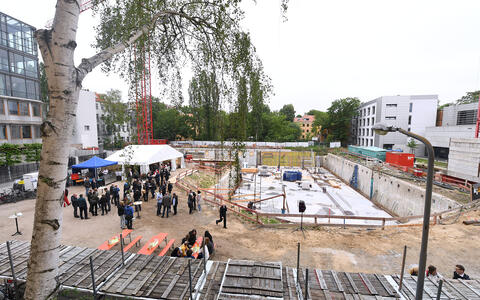MDC celebrates construction of new BIMSB building in the heart of Berlin
The large excavation pit, several meters deep, lined with concrete and surrounded by a wooden fence, does not give much more away than the shape of the future building. For this event, a microphone was set up in the middle of the “basement” for the speakers, who had to wear safety shoes and a hard hat to access the site.
“The new facilities will help to intensify collaborations with our partners based in Berlin-Mitte – the Charité, the BIH, the IRI and Humboldt-Universität,” said Thomas Sommer in his welcome address. The cell biologist served as interim Scientific Director of the MDC until recently and oversaw preparations for the construction works. Sommer gave special thanks to Humboldt-Universität, which set aside one of the best spots on campus for the MDC. The building, Sommer added, was not created on an architect’s drawing board but is the result of a concept developed by the MDC and BIMSB in collaboration with their partners and is designed specifically to meet the needs of science. For example, it is extremely important that the laboratories encourage interdisciplinary work and thus support the systems biology groups. The architecture firm in charge of the project, Staab Architekten, worked extremely well with the scientists, added Sommer.
In his speech, Nikolaus Rajewsky, head of the BIMSB, stressed the importance of scientific issues in the development of the institute itself and of the new facilities. “With the BIMSB we want to undertake important scientific activities that were previously neglected at the MDC, including the systematic measuring of molecular interactions and innovative technical and theoretical work methods,” explained Rajewsky, a systems biologist who was instrumental in founding the institute in 2008. Rajewsky managed to secure considerable support from the scientific community in Berlin and – just one year after he first came up with the idea – obtained around €11 million as start-up capital from the federal and state governments in order to hire the first few members of staff and bring Markus Landthaler, Wei Chen and other group leaders to the MDC. “The new location is an important driver for the MDC as a whole,” said Rajewsky. “To date, we have been able to recruit 16 group leaders, and that is still our most important task: bringing new, brilliant minds to Berlin to further strengthen the scientific work of the MDC.” The BIMSB currently employs 200 scientists in 14 research groups, with the number of groups set to rise to 25 in the coming years. “The construction site seems huge, but I’m sure we’ll fill the entire building in no time,” said Rajewsky.
Rajewsky emphasized that the BIMSB concept also comprises various training activities for junior scientists. In 2009, the institute launched an international exchange program with New York University that allows PhD students to work on collaborative projects and receive part of their training in New York. The new location will create significant momentum in this area too: “We need to make use of the proximity to the various areas of expertise and the faculties and scientists based on the campus to enable us to work together to further develop the use of new key technologies. We also need to make these things available to the students. In this way, we can help create a better, internationally oriented training program for students – a win-win situation,” said Rajewsky.
The new BIMSB location will reinvigorate the life sciences – not only through technology and collaborations but through art, culture and a public dialogue. In addition to the state-of-the-art laboratories and technology areas, a communications hall is planned for hosting public events relating to art, society and science. Good coffee machines are also sure to be available on site – after all, exchanging ideas in the hallways, for example over a stimulating cup of coffee, is hugely important for developing ideas as a group and collaborating with colleagues.




